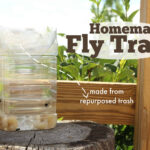The internet is awash with information, making it challenging to distinguish between fact and fiction. This is particularly true when it comes to the spotted lanternfly, a pest that has been causing concern and confusion since its arrival in North America in 2014. As a relatively new insect to the U.S., people are understandably eager to learn about it, but this eagerness can sometimes lead to the spread of inaccurate information.
Julie Urban, an associate research professor of entomology at Penn State’s College of Agricultural Sciences, points out that the initial lack of knowledge surrounding the spotted lanternfly, combined with public frustration, has unfortunately fueled the sharing of misinformation, especially on social media platforms. It’s crucial to rely on up-to-date information from trustworthy sources, rather than outdated claims or unfounded rumors.
Ongoing research is continually revealing more about the spotted lanternfly. However, several myths persist. One common question that arises is: Can Lantern Flies Bite? Let’s address this and other misconceptions to provide clarity.
The Myth of the Lanternfly Bite: Are They Harmful to Humans?
One of the most common myths is that spotted lanternflies are harmful to humans, pets, or livestock, and that they can bite or sting. Fortunately, this is not the case. Experts confirm that lantern flies cannot bite humans or animals.
Urban clarifies that spotted lanternflies possess piercing-sucking mouthparts, which function much like a tiny straw to extract sap from plants. These mouthparts are simply not designed or strong enough to penetrate human or animal skin. Therefore, the fear of lantern fly bites is unfounded.
While the question “can lantern flies bite?” can be definitively answered with a “no,” it’s important to debunk other related myths surrounding this insect.
Debunking Other Common Myths About Spotted Lanternflies
Beyond the bite myth, several other misconceptions about spotted lanternflies circulate. Let’s examine some of the most prevalent:
Myth 1: Lanternflies Kill All Plants and Trees
The misconception that spotted lanternflies decimate all plant life is widespread. However, Kelli Hoover, professor of entomology at Penn State, states that while spotted lanternflies feed on over 100 species of trees and plants, they rarely cause plant death, with a couple of notable exceptions.
Cultivated grapes are highly vulnerable, posing a significant threat to vineyards. Tree of heaven (Ailanthus altissima), an invasive tree species, is also susceptible. However, for most other trees and plants, the feeding is usually not fatal.
Hoover cautions that heavy infestations can stress trees, making them more vulnerable to diseases, other pests, or drought. Young saplings are more at risk than mature trees. Despite the reduced threat to plant life compared to initial fears, the economic impact of spotted lanternflies remains significant due to quarantine regulations aimed at preventing their spread.
Myth 2: Lanternflies Have Disappeared from Certain Areas
Some people have observed fewer spotted lanternflies in areas previously heavily populated and believe the pest is gone. Emelie Swackhamer, a horticulture extension educator, clarifies that this is unlikely. Population fluctuations are normal, influenced by factors like natural predators, control efforts, and food availability.
The most likely reason for a decrease in lanternfly numbers in a specific area is food depletion. They may move on to find better food sources, potentially returning when trees recover. Therefore, a temporary decrease doesn’t mean they are eradicated.
Myth 3: Homemade Sprays Are Safe and Effective
Faced with an infestation, many seek quick, homemade solutions. Recipes using dish soap, vinegar, garlic, or辣椒 peppers are often suggested. While some ingredients like dish soap seem harmless, Swackhamer warns against these remedies.
Even dish soap can harm beneficial insects, other animals, and even plants. Instead of homemade sprays, non-chemical methods like destroying egg masses, swatting, traps, and removing tree of heaven are recommended. For chemical control, registered insecticides applied cautiously or by professionals are suggested, always considering safety risks.
Myth 4: Lanternflies Are Harmful to Pets and Livestock
Concerns about toxicity to pets have surfaced on social media. Urban states that there is currently no evidence to support claims of spotted lanternfly toxicity to pets. Tests have not detected cantharidin, a harmful substance found in some other insects.
However, ongoing research is crucial, and it’s wise to prevent pets from eating large quantities of any insects, including spotted lanternflies, due to potential digestive issues from their exoskeletons and wings. While not directly harmful to structures, lanternflies excrete honeydew, a sugary substance leading to sooty mold growth, creating a mess and attracting other pests.
Conclusion
In conclusion, the answer to “can lantern flies bite?” is a definitive no. Spotted lanternflies are not known to bite, sting, or pose direct harm to humans or pets in that manner. While they are a significant agricultural and economic pest, understanding the facts and dispelling myths is crucial for effective management and reducing unnecessary fear.
For the most accurate, science-based information about spotted lanternflies, consult reliable sources like Penn State Extension at extension.psu.edu/spotted-lanternfly or call 888-4BAD-FLY (888-422-3359). Staying informed with credible data is the best approach to dealing with this invasive insect.
